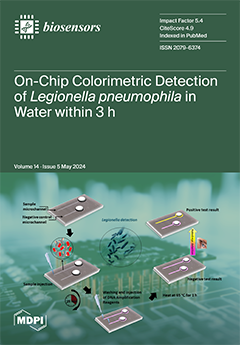Copper is an essential trace metal for biological processes in humans and animals. A low level of copper detection at physiological pH using fluorescent probes is very important for in vitro applications, such as the detection of copper in water or urine, and in vivo applications, such as tracking the dynamic copper concentrations inside cells. Copper homeostasis is disrupted in neurological diseases like Alzheimer’s disease, and copper forms aggregates with amyloid beta (Ab42) peptide, resulting in senile plaques in Alzheimer’s brains. Therefore, a selective copper detector probe that can detect amyloid beta peptide-copper aggregates and decrease the aggregate size has potential uses in medicine. We have developed a series of Cu
2+-selective low fluorescent to high fluorescent tri and tetradentate dentate ligands and conjugated them with a peptide ligand to amyloid-beta binding peptide to increase the solubility of the compounds and make the resultant compounds bind to Cu
2+–amyloid aggregates. The copper selective compounds were developed using chemical scaffolds known to have high affinity and selectivity for Cu
2+, and their conjugates with peptides were tested for affinity and selectivity towards Cu
2+. The test results were used to inform further improvement of the next compound. The final Cu
2+ chelator–peptide conjugate we developed showed high selectivity for Cu
2+ and high fluorescence properties. The compound bound 1:1 to Cu
2+ ion, as determined from its Job’s plot. Fluorescence of the ligand could be detected at nanomolar concentrations. The effect of this ligand on controlling Cu
2+–Ab42 aggregation was studied using fluorescence assays and microscopy. It was found that the Cu
2+–chelator–peptide conjugate efficiently reduced aggregate size and, therefore, acted as an inhibitor of Ab42-Cu
2+ aggregation. Since high micromolar concentrations of Cu
2+ are present in senile plaques, and Cu
2+ accelerates the formation of toxic soluble aggregates of Ab42, which are precursors of insoluble plaques, the developed hybrid molecule can potentially serve as a therapeutic for Alzheimer’s disease.
Full article






